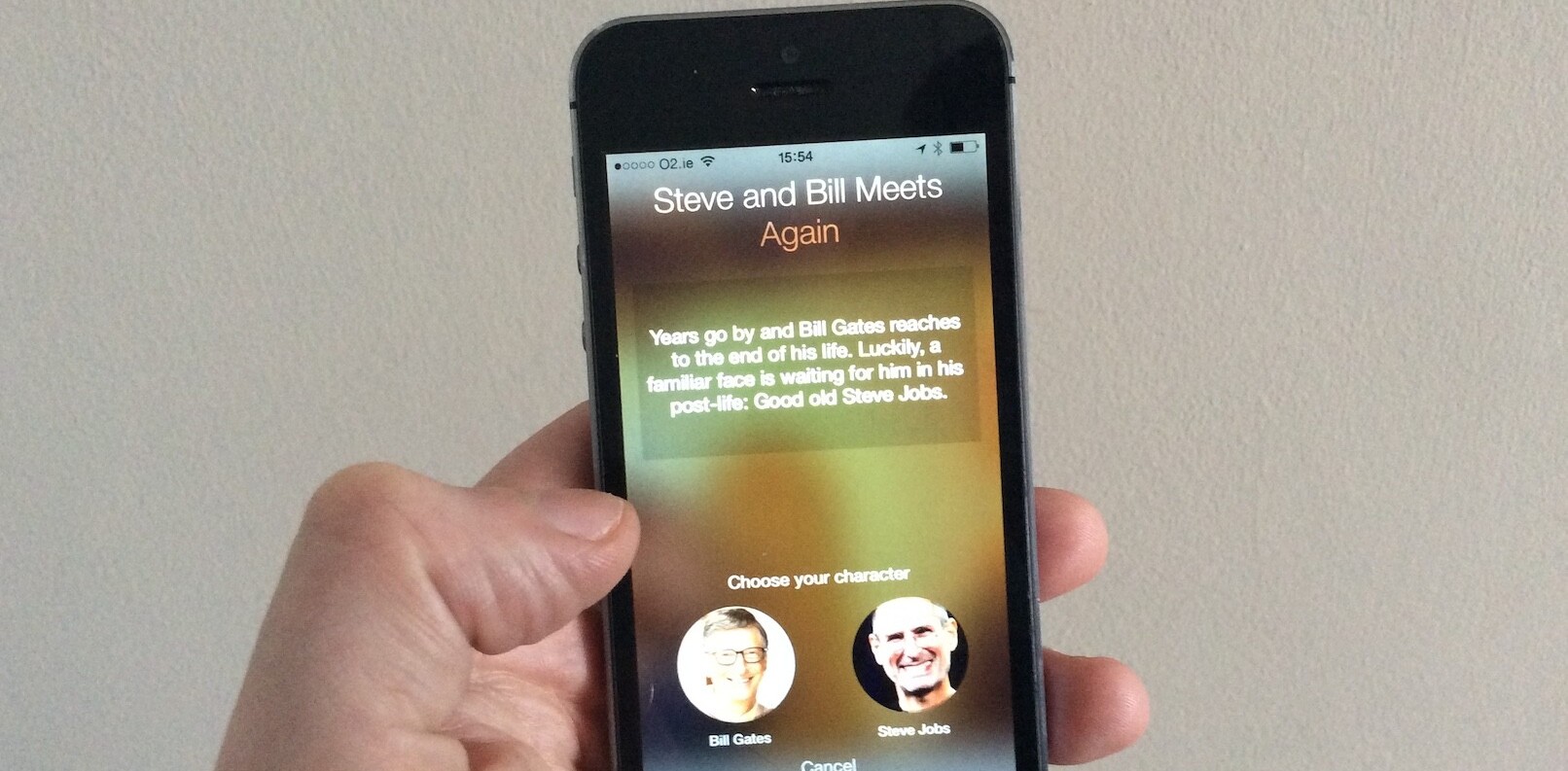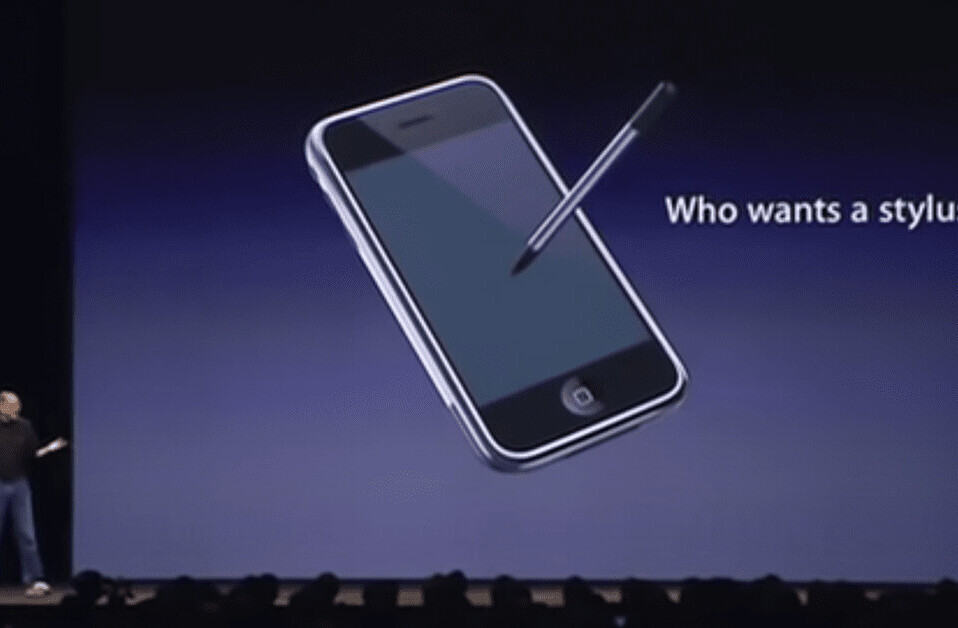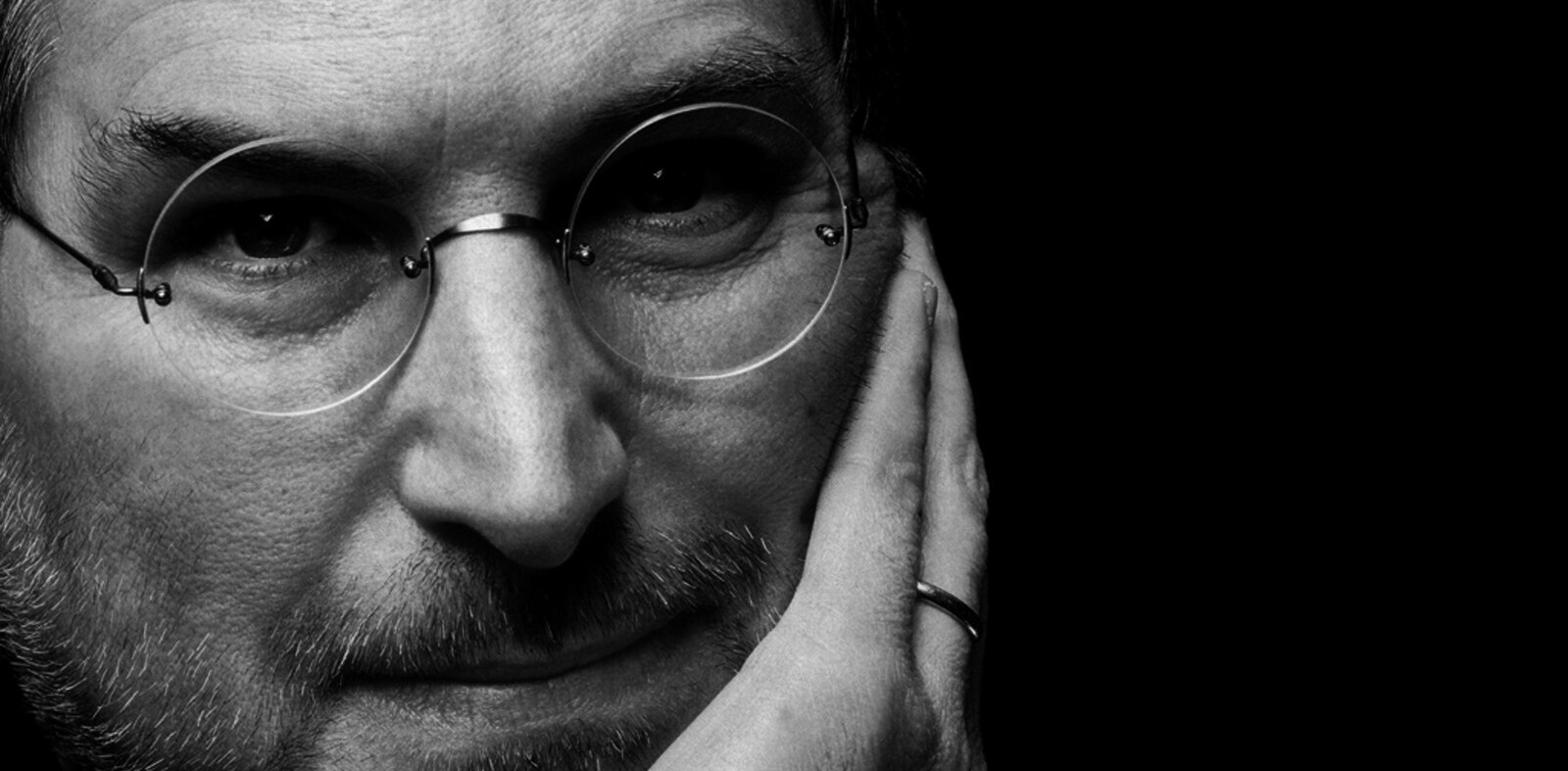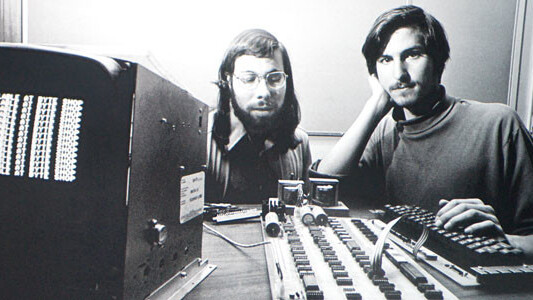
Today’s announcement from Steve Jobs that he’s resigning as CEO of Apple and handing the job to protege Tim Cook isn’t a surprise. We’ve seen this coming since Jobs’ first leave of absence for health reasons, and there’s been a lot of discussion about Apple’s succession plan. But it is still news — big news — and there are a lot of questions to ask and think about.
Perhaps most important at the end of such a significant era is to reflect on that era and take another look at just what was achieved. Without that benchmark, it’ll be hard to judge how well Cook is doing a year or more from now. Unfortunately for Cook, he’s got big shoes to fill. As you’re about to see, Jobs has performed feats in the business of technology that could almost be considered superhuman.
The Apple I & II
On April 1, 1976, Steve Jobs, Steve Wozniak and Ronald Wayne founded Apple to begin selling their Apple I computer kit. The Apple I had the aesthetic appeal of a gaudy prop from a Western movie, and was the first fully assembled circuit board for sale when other hobbyist computers were only sold in kit form. Woz assembled them by hand himself before they were sold.
Early the next year in 1977, Apple was incorporated. Co-founder Ronald Wayne, who remains largely forgotten, sold his share of the company back to Jobs and Woz for only $800. Wayne missed out on becoming a very rich man by a small margin.

In April of 1977, just under a year after the Apple I was introduced to the market, Apple started selling the Apple II. Jobs and Woz had gotten ahead of their primary competition feature-wise by including color graphics and open architecture. The Apple II didn’t sell like crazy until it was chosen as the target platform of spreadsheet app VisiCalc. This made the platform popular for businesses, and for home users who wanted compatibility with their business machines. VisiCalc paved the road for the Apple II’s success, and was an early lesson to Jobs on the value of killer apps.
The Rise of the GUI
Apple is often credited with inventing the graphical user interface. They didn’t. When Jobs and several Apple employees visited Xerox PARC to check out the Xerox Alto machine, which had an innovative GUI, Jobs knew that this was the future of computers. Apple negotiated three days of access to the machine and PARC facilities in return for the option to buy shares at pre-IPO prices, and the company started to apply that knowledge to the Apple Lisa project.
As an early example of Jobs’ famous abrasive personality, Jobs was pushed out of the Lisa project in 1982 after putting four years of work into the project. He moved over to the Macintosh project where the team was working on a lower-cost alternative to more expensive devices like the Lisa. The two teams developed a rivalry that Jobs instigated, competing with each other to be first on the market.

While the Lisa team beat the Macintosh team, the Lisa was a flop. When the Macintosh arrived on the market, its low cost and innovative GUI made it a hit.
Power Struggles & NeXT
In 1985, Jobs and CEO John Sculley started to fight over Jobs’ expensive experimental projects. After he attempted to get rid of Sculley unsuccessfully, the board stripped Jobs of his managerial position. Jobs soon resigned and started NeXT Inc, which made high-end computers and software.

While NeXT was commercially unsuccessful, the software was innovative. At the end of 1996, Apple paid $429 million and 1.5 million Apple shares to acquire the company. The deal was designed so that Jobs didn’t get any cash, but did get all of the 1.5 million Apple shares. Apple’s primary intention was to acquire the NeXTSTEP operating system and make it the basis of the company’s next operating system. Jobs came with the acquisition as a consultant, and stepped in as interim CEO in 1997 after the board removed Gil Amelio after a three-year stint of record-low share prices and increasing losses. In 2000, after three years as “interim” CEO, Jobs officially took the CEO position permanently. He was back in charge of the company he built and was ousted from.
Jobs built a unique corporate culture at NeXT. Despite his reputation as a prickly guy, focused on the product and not particularly considerate, he made social and cultural decisions ahead of his time — such as extending health insurance benefits to same-sex couples, not just married partners. This is an attitude he brought with him to Apple, which is well-known as a socially progressive and accepting company. It may or may not be telling that Apple’s new CEO Tim Cook is gay: it is hard to imagine an earlier time when a gay man could run one of the world’s biggest companies.
Cleaning Up
In 1997, Jobs coordinated a deal with the devil, Microsoft. Many credit this deal with Apple’s survival through near-bankruptcy, thanks to the sorry state the company was in when Jobs returned. Microsoft invested $150 million of much needed cash in the company in exchange for non-voting stock, and agreed to release new versions of Microsoft Office for the Mac.
Also that year, Jobs got ahead of the rise of e-commerce and opened the Apple Store — an online store that used a build-to-order strategy to get a range of products delivered to customers.

In 1998, Apple introduced the iMac. Jobs’ strategy at Apple was to make the computer the digital hub of a user’s life, the center of a digital lifestyle that came with the Internet age. The iMac was an all-in-one computer, the first Apple product where the design team was led by Jonathan Ive. Ive would become a member of Jobs’ core team, leading the iconic designs of the PowerBook G4, the Cube, MacBook, unibody MacBook Pro, MacBook Air, iPhone and iPad.
Jobs identified the creative market as an important niche of users, both as customers and evangelists — even today, it’s easier to find designers, developers, musicians and their kin using Macs than Windows computers. Apple made a range of strategic purchases to solidify that audience. They bought Macromedia’s Final Cut and turned the product into iMovie and Final Cut Pro. They bought Nothing Real for the Shake product which would become part of the Final Cut Pro suite, and Emagic’s Logic, which became GarageBand, Logic Express and Logic Pro. Along with the internally developed iPhoto, this gave Apple a full spread of applications for professional creatives and consumers. iLife would go on to become one of the core selling points of Macs that shipped with OS X.
Mac OS X came out on March 24, 2001, a combination of NeXT OPENSTEP and BSD Unix. Steve Jobs staged a dramatic funeral for Mac OS 9 at the event unveiling Mac OS X, making it clear that OS X represented a whole new phase in Apple’s history.
A few months later, Apple introduced another of Jobs’ projects: the Apple Retail Store, which is today an iconic retail chain and a benchmark for other retailers (despite its Genius Bar staff, who have a reputation for smarminess). It unveiled the first stores in Virginia and California.
Return to Profitability
On October 23 of 2001, Apple announced the iPod, which became one of the company’s most successful products ever, sold 100 million units in its first six years and became the de facto standard for MP3 players (which were in a sorry state beforehand, with the exception perhaps of the Creative ZEN players).
In 2003, Apple’s iTunes Store was introduced, allowing users to buy songs for $0.99 a piece and easily sync them with their iPod. It quickly became, and has remained, the biggest online music retailer on the market and eventually topped brick-and-mortar stores as well. With the iPod, the iTunes Store literally changed how most everyone listens to music.
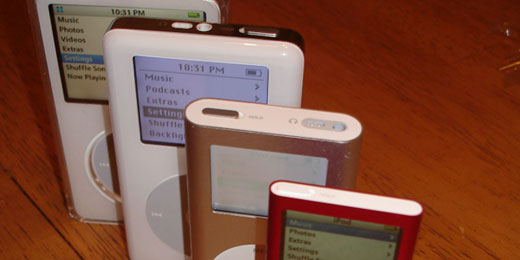
Image credit: Chris Harrison.
By this stage, Jobs had demonstrated a keen sense for what innovative ideas that would work in the market — even if it seemed crazy to onlookers — and a vision greater than any of his competitors. Investors who realized this at the time, when Apple stock was still affordable, now probably all own islands.
Jobs oversaw Apple’s transition to Intel CPUs from 2005 to 2006, with the first products running Intel CPUs being the MacBook Pro and iMac. The transition was expected to end in late 2007, but was completed by August 7, 2006. While there were many reasons cited for moving to Intel, one that proved strategically beneficial to Apple was the ability for these computers to run Windows. Apple created Boot Camp and marketed the feature to consumers who were cautious but interested in the strange world of Macs, reassuring them the transition could be as easy as they wanted it to be.
In 2003, Apple was worth $6 a share, and by 2006, it was worth $80 a share. Its market cap was larger than that of Dell, whose CEO had criticized Apple’s continued existence during its less glorious years.
Apple Inc.
In 2007, Jobs announced that Apple Computer, Inc. would become simply Apple Inc. — a significant gesture that indicated the company’s move into consumer electronics and mobile devices. At that same event, Apple announced the iPhone, a device that had been around the rumor mill more than any other rumor ever for several years prior, and the Apple TV, which would bring the iTunes Store digital media strategy to the television — a product that is to this day under-appreciated for the the innovation it represents. Apple recognized the difficulty of displacing set-top boxes and has always called the Apple TV a hobby, though it does reasonably well.

With the announcement of the iPhone 3G, Apple introduced the App Store which allowed developers to sell third-party apps for the iPhone and iPod Touch. In its first month, the App Store made around $30 million. Before the end of 2008, Apple would become the third-largest mobile phone supplier worldwide.
In the middle of the Great Recession, when other companies were laying off employees in huge numbers, Apple announced its best non-holiday quarter ever. If Jobs’ hadn’t shifted the companies focus when he had, it likely would have taken a beating.
Jobs’ Crowning Legacy: The iPad
Since that record-breaking quarter in early 2009, Apple has released or announced many significant products, from the iPhone 4 to iCloud. But the most significant milestone since the iPhone and App Store is definitely the iPad. The iPad is well-known as a pet project of Jobs, who has long had a keen interest in the tablet form factor but found existing PC-like options on the market to miss the point — going so far as to show a personal disdain for the humble stylus.
When he announced the iPad in 2010, we were looking at the result of many years of Jobs’ personal intervention and attention to detail, probably spanning back as far as 1998, when Jobs killed the Newton. It was a move that was met with a lot of anger, as the Newton had a dedicated user base. Now we know what Jobs had in mind.

Jobs, with Wozniak, essentially created the personal computer as it is known today. Years later, Jobs turned a dying company into a profitable one, introduced an innovative new operating system, a cutting-edge line of computers that are constantly evolving faster than the competition’s, revolutionized the digital music industry, burst into and disrupted the competitive and difficult-to-enter mobile phone market and brought us the Macbook Air, which changed the ultraportable market previously known for computers that were small but lacked grunt into one with offerings good enough for professional use.
But what he’ll no doubt be remembered for most is creating a new class of sub-PC device, the iPad, which has turned the lackluster tablet area into a thriving consumer market with new users every day — where the iPad continues to dominate the competition.
The slowly rotting company that Michael Dell said should close down while it still had something to return to its investors has, this year, passed Exxon as the world’s most valuable company, and has bigger financial reserves than the US government by several billion dollars. And that is something we can directly thank Steve Jobs for.
Get the TNW newsletter
Get the most important tech news in your inbox each week.

